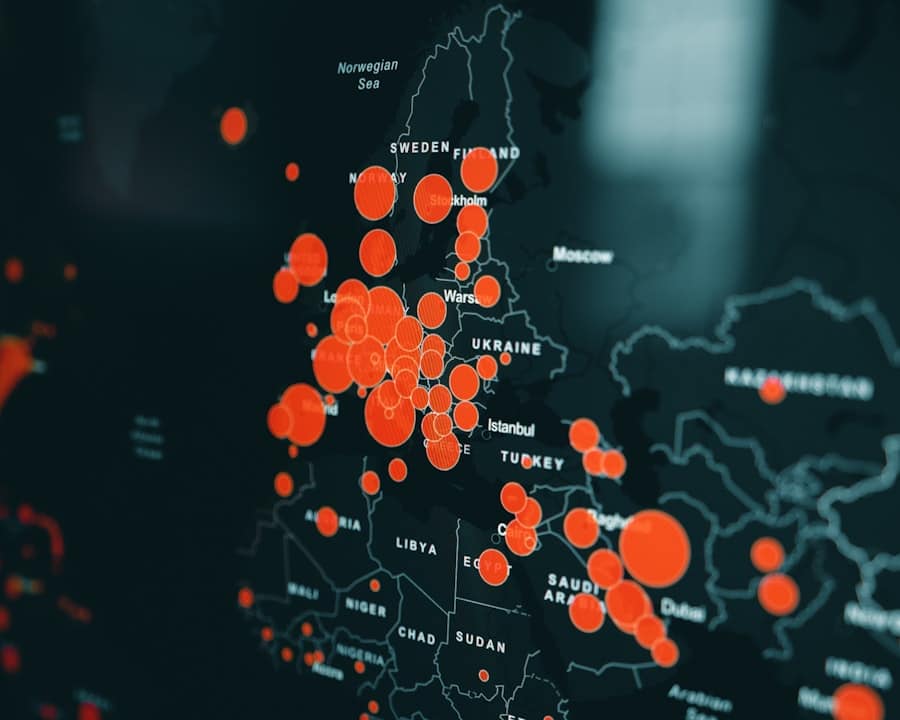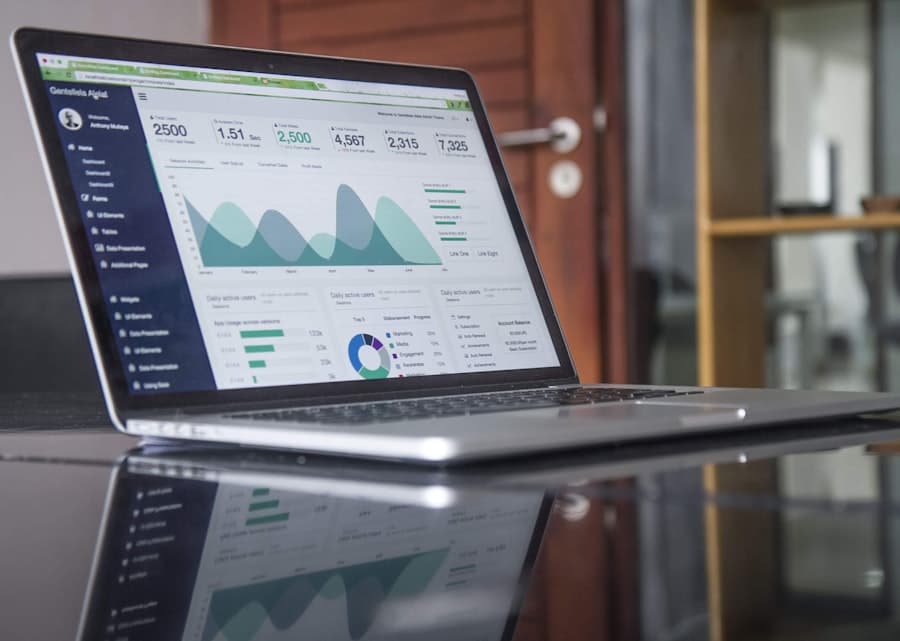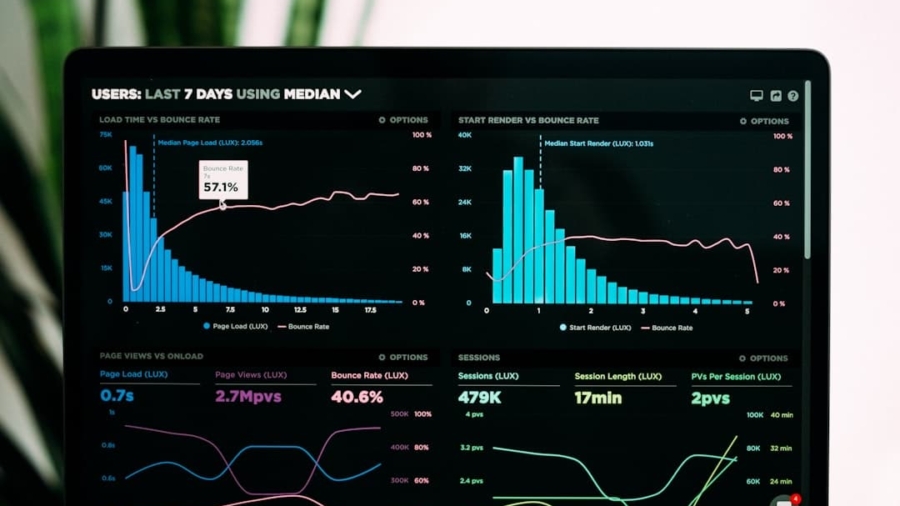The advent of artificial intelligence (AI) has revolutionized numerous sectors, and the job market is no exception. Over the past decade, AI-driven job market analytics have emerged as a powerful tool for employers and job seekers alike. These analytics leverage vast amounts of data to provide insights into hiring trends, candidate behavior, and market demands.
By analyzing patterns in job postings, candidate applications, and industry shifts, organizations can make informed decisions that enhance their recruitment strategies. This shift towards data-driven hiring practices has not only streamlined the recruitment process but has also introduced a level of precision that was previously unattainable. As companies increasingly recognize the value of AI in understanding labor market dynamics, the demand for sophisticated analytics tools has surged.
Organizations are now able to predict hiring needs based on historical data and current trends, allowing them to proactively address talent shortages or surpluses. For instance, a tech company might analyze job postings across various platforms to identify emerging skills in demand, enabling them to tailor their recruitment efforts accordingly. This proactive approach not only saves time and resources but also positions companies to remain competitive in an ever-evolving job landscape.
Key Takeaways
- AI-driven job market analytics are revolutionizing the way companies approach talent acquisition and recruitment processes.
- AI plays a crucial role in making hiring decisions by analyzing large volumes of data to identify the best candidates for a job.
- AI-driven job market analytics improve recruitment processes by automating repetitive tasks, reducing bias, and identifying top talent more efficiently.
- AI has the potential to impact diversity and inclusion in hiring by removing bias and increasing objectivity in the selection process.
- AI-driven job market analytics can be leveraged to analyze skill gaps in the workforce and develop targeted training programs to address them.
Understanding the Role of AI in Hiring Decisions
AI plays a multifaceted role in hiring decisions, fundamentally altering how organizations evaluate candidates. Traditional hiring processes often rely on subjective assessments and human intuition, which can lead to biases and inconsistencies. In contrast, AI-driven systems utilize algorithms that analyze candidate data objectively, focusing on qualifications, experience, and skills rather than personal characteristics.
This shift towards data-centric evaluations helps mitigate unconscious biases that can inadvertently influence hiring outcomes. Moreover, AI can enhance the efficiency of the hiring process by automating repetitive tasks such as resume screening and initial candidate assessments. For example, AI algorithms can quickly sift through thousands of resumes to identify those that meet specific criteria, significantly reducing the time recruiters spend on this task.
This allows human resources professionals to focus on more strategic aspects of recruitment, such as engaging with candidates and fostering relationships. By streamlining these processes, AI not only accelerates hiring timelines but also improves the overall candidate experience.
How AI-Driven Job Market Analytics Improve Recruitment Processes

AI-driven job market analytics enhance recruitment processes by providing actionable insights that inform decision-making at every stage of hiring.
Recruiters can access data on salary benchmarks, skill demand fluctuations, and competitor hiring practices, enabling them to craft competitive job offers and attract top talent.
For instance, if analytics reveal a surge in demand for data scientists in a particular region, companies can adjust their compensation packages to remain attractive to potential candidates. Additionally, these analytics facilitate targeted recruitment strategies by identifying the most effective channels for reaching desired candidates. By analyzing historical data on where successful hires originated—be it job boards, social media platforms, or employee referrals—organizations can allocate their resources more effectively.
This targeted approach not only increases the likelihood of finding suitable candidates but also optimizes recruitment budgets by minimizing wasted efforts on less effective channels.
The Impact of AI on Diversity and Inclusion in Hiring
The integration of AI in hiring processes has significant implications for diversity and inclusion within organizations. Traditional recruitment methods often perpetuate biases that can hinder diverse talent from being recognized or considered for roles. However, AI-driven analytics can help identify and eliminate these biases by focusing solely on candidate qualifications and performance metrics.
For example, algorithms can be designed to ignore demographic information such as age, gender, or ethnicity during the initial screening process, ensuring that candidates are evaluated based on their skills and experiences alone. Furthermore, AI can assist organizations in setting diversity goals and tracking progress over time. By analyzing workforce demographics and comparing them against industry benchmarks, companies can identify areas where they may be falling short in terms of diversity.
This data-driven approach enables organizations to implement targeted initiatives aimed at attracting underrepresented groups, ultimately fostering a more inclusive workplace culture. For instance, if analytics reveal a lack of female candidates in technical roles, companies can develop outreach programs specifically aimed at encouraging women to apply.
Leveraging AI-Driven Job Market Analytics for Skill Gaps Analysis
One of the most valuable applications of AI-driven job market analytics is in identifying skill gaps within the workforce. As industries evolve and new technologies emerge, the demand for specific skills can change rapidly.
This information is crucial for workforce planning and development strategies. For example, a manufacturing company might use AI analytics to assess the skills required for emerging technologies such as automation and artificial intelligence. By comparing current employee skill sets with industry demands, the organization can identify gaps that need to be addressed through training or hiring initiatives.
This proactive approach not only ensures that the workforce remains competitive but also enhances employee engagement by providing opportunities for professional development.
The Future of AI-Driven Job Market Analytics in Talent Acquisition

The future of AI-driven job market analytics in talent acquisition is poised for significant growth as technology continues to advance. As machine learning algorithms become more sophisticated, they will be able to provide even deeper insights into candidate behavior and preferences. For instance, predictive analytics could forecast which candidates are most likely to accept job offers based on their previous interactions with similar roles or companies.
This capability would allow recruiters to tailor their outreach efforts more effectively. Moreover, as organizations increasingly adopt remote work models, AI-driven analytics will play a crucial role in understanding global talent markets. Companies will be able to analyze data from various regions to identify where specific skills are concentrated and how to tap into those talent pools effectively.
This global perspective will enable organizations to build diverse teams that bring a wealth of perspectives and experiences to the table.
Overcoming Challenges and Ethical Considerations of AI in Hiring
Despite the numerous benefits of AI-driven job market analytics, there are challenges and ethical considerations that organizations must navigate. One significant concern is the potential for algorithmic bias, where AI systems inadvertently perpetuate existing biases present in training data. If historical hiring data reflects biased practices—such as favoring certain demographics—AI algorithms may replicate these biases in their evaluations.
To mitigate this risk, organizations must ensure that their AI systems are trained on diverse datasets and regularly audited for fairness. Additionally, transparency in AI decision-making processes is essential for building trust among candidates and employees. Organizations should communicate how AI is used in hiring decisions and provide candidates with feedback on their applications when possible.
This transparency not only fosters trust but also encourages continuous improvement in AI systems by allowing organizations to learn from candidate experiences.
Best Practices for Implementing AI-Driven Job Market Analytics in Hiring Processes
To effectively implement AI-driven job market analytics in hiring processes, organizations should adhere to several best practices. First and foremost, it is crucial to define clear objectives for using AI in recruitment. Whether the goal is to reduce time-to-hire, improve candidate quality, or enhance diversity efforts, having specific objectives will guide the selection of appropriate tools and metrics.
Furthermore, organizations should invest in training for HR professionals to ensure they understand how to leverage AI tools effectively. This training should encompass not only technical skills but also an understanding of ethical considerations related to AI use in hiring. By equipping HR teams with the knowledge they need to navigate these complexities, organizations can maximize the benefits of AI while minimizing potential pitfalls.
Finally, continuous monitoring and evaluation of AI systems are essential for ensuring their effectiveness over time. Organizations should regularly assess the outcomes of their hiring processes and make adjustments as needed based on data-driven insights. By fostering a culture of continuous improvement and adaptability, companies can harness the full potential of AI-driven job market analytics while remaining responsive to changing workforce dynamics.
If you are interested in how technology is shaping the future of work, you may also want to check out this article on the best apps for Facebook in 2023. Just as AI-driven job market analytics are revolutionizing the hiring process, social media platforms like Facebook are constantly evolving and offering new tools for businesses to connect with their audience. Stay ahead of the curve by exploring the latest trends in technology and how they can benefit your company.
FAQs
What is AI-driven job market analytics?
AI-driven job market analytics refers to the use of artificial intelligence and data analytics to gather, analyze, and interpret job market data. This data can include information on job trends, salary ranges, candidate skills, and other relevant factors that can help companies make informed hiring decisions.
How do AI-driven job market analytics help companies make better hiring decisions?
AI-driven job market analytics help companies make better hiring decisions by providing them with valuable insights into the job market. This can include identifying in-demand skills, understanding salary trends, and predicting future job market needs. By leveraging this data, companies can make more informed decisions when it comes to hiring and talent acquisition.
What are the benefits of using AI-driven job market analytics for hiring?
Some of the benefits of using AI-driven job market analytics for hiring include improved candidate sourcing, better understanding of market demand for specific skills, more accurate salary benchmarking, and the ability to forecast future talent needs. This can ultimately lead to more efficient and effective hiring processes.
What are some examples of AI-driven job market analytics tools?
There are several AI-driven job market analytics tools available in the market, including platforms that use machine learning algorithms to analyze job postings, candidate resumes, and other relevant data to provide insights into the job market. Some examples of these tools include Burning Glass, TalentNeuron, and Talent Insights by LinkedIn.
How is AI-driven job market analytics impacting the recruitment industry?
AI-driven job market analytics is transforming the recruitment industry by enabling companies to make data-driven hiring decisions. This has the potential to streamline the recruitment process, improve candidate quality, and reduce time-to-hire. Additionally, it can help companies stay ahead of market trends and make proactive talent acquisition decisions.

